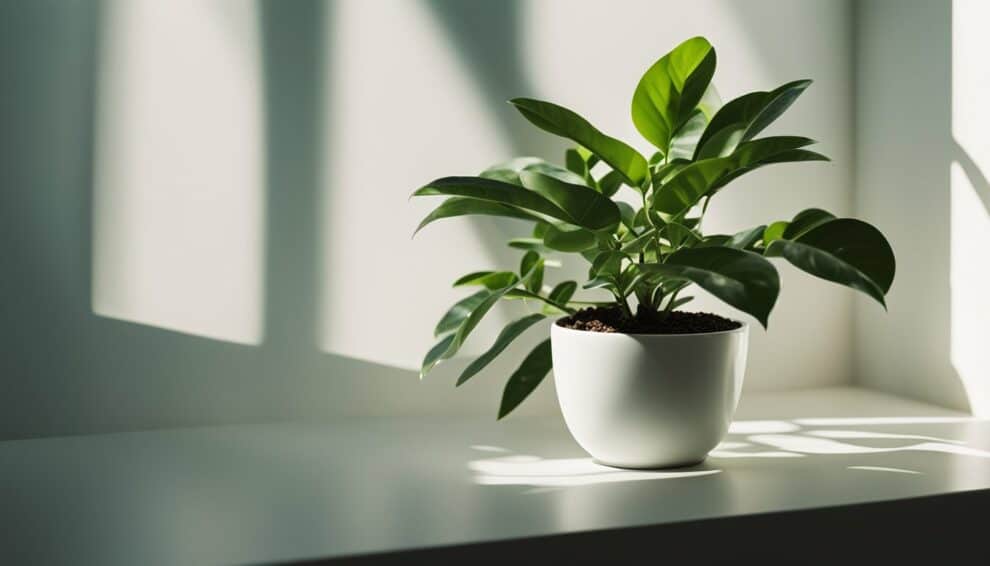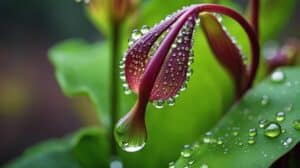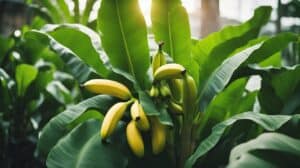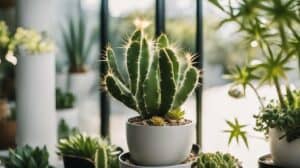The ZZ plant, scientifically known as Zamioculcas zamiifolia, is a popular choice among plant enthusiasts due to its low-maintenance nature.
This plant is native to Africa and is characterized by its glossy, dark green leaves that are capable of storing water for long periods.
Its ability to thrive in low light conditions and its resistance to pests and diseases make it an ideal plant for beginners.

The ZZ plant is a great addition to any home or office space. Its compact size and easy-going nature make it a versatile plant that can fit into any decor.
Whether placed in a pot or a hanging basket, the ZZ plant can add a touch of greenery to any space without requiring much attention.
With its ability to purify the air and its low watering needs, the ZZ plant is the ultimate low-maintenance plant for those who are just starting their plant journey.
Understanding the ZZ Plant
Origins and Characteristics
The ZZ Plant, also known as Zamioculcas zamiifolia, is native to Eastern Africa. It was first discovered in Tanzania and Zanzibar in the 19th century.
The plant is a member of the Araceae family, which includes other popular houseplants such as Philodendrons and Peace Lilies.
The ZZ Plant is known for its unique appearance and hardiness.
It has glossy, dark green leaves that are shaped like ovals and grow in pairs along a thick stem.
The leaves are smooth and waxy, giving them a shiny appearance.
The plant can grow up to 3 feet tall and wide, making it a great choice for filling up empty spaces in a room.
Growth Habits
One of the reasons why the ZZ Plant is so popular is because it is incredibly low-maintenance.
It can thrive in a variety of lighting conditions, from low to bright indirect light.
The plant is also drought-tolerant and can go weeks without water, making it a great option for busy people or those who tend to forget to water their plants.
The ZZ Plant prefers well-draining soil and should be watered only when the top inch of soil is dry to the touch.
Overwatering can lead to root rot, so it’s important to let the soil dry out completely between waterings.
The plant is also resistant to pests and diseases, making it a great choice for beginners who may not have experience dealing with plant problems.
Overall, the ZZ Plant is a great option for anyone looking for a low-maintenance, hardy houseplant that can add a touch of green to their space.
Caring for Your ZZ Plant

Watering Requirements
ZZ plants are known for their ability to survive in low light and low humidity environments, making them the ultimate low-maintenance plant for beginners.
One of the reasons for this is their ability to store water in their rhizomes, which means they can go long periods without being watered.
In fact, overwatering is one of the most common mistakes made when caring for ZZ plants.
It’s important to allow the soil to dry out completely between waterings.
A good rule of thumb is to water your ZZ plant once every two to three weeks, depending on the humidity and temperature of your home.
Light and Temperature Preferences
ZZ plants thrive in bright, indirect light, but they can also survive in low light conditions.
They do not do well in direct sunlight, as it can burn their leaves.
If you notice your ZZ plant’s leaves turning yellow or brown, it may be getting too much direct sunlight.
ZZ plants also prefer temperatures between 65-75°F (18-24°C), making them a great option for indoor environments.
Potting and Soil Tips
When it comes to potting your ZZ plant, it’s important to choose a pot with good drainage.
ZZ plants do not like to sit in water, so make sure the pot has drainage holes at the bottom.
As for soil, ZZ plants prefer well-draining soil that is slightly acidic.
A good potting mix for ZZ plants is one that is made up of equal parts of perlite, peat moss, and potting soil.
It’s also important to avoid using heavy or clay-based soils, as they can hold too much water and suffocate the roots.
Overall, caring for a ZZ plant is incredibly easy and low-maintenance.
With the right watering schedule, light conditions, and soil, your ZZ plant will thrive and add a touch of green to your home without requiring too much attention.
Common Issues and Solutions

Pest Infestations
Despite being a low-maintenance plant, ZZ plants can still fall victim to pest infestations.
The most common pests that affect ZZ plants are mealybugs and spider mites.
Mealybugs are small, white, cotton-like insects that can be found on the undersides of leaves, while spider mites are tiny, reddish-brown pests that spin webs on plant leaves.
To get rid of mealybugs, simply wipe them off with a damp cloth or cotton swab dipped in rubbing alcohol.
For spider mites, use a mixture of water and dish soap to spray the affected areas.
It’s important to act quickly when dealing with pest infestations, as they can quickly spread to other plants.
Signs of Improper Care
ZZ plants are known for their ability to thrive in low-light conditions and tolerate neglect, but there are still some signs of improper care to watch out for.
Yellowing leaves can be a sign of overwatering or underwatering, so make sure to check the soil moisture level before watering.
If the leaves are drooping, it could be a sign of too much direct sunlight or lack of water. Move the plant to a shadier spot or water it more often.
Brown tips on the leaves can be caused by dry air, so consider misting the plant or placing a humidifier nearby.
Overall, ZZ plants are a great choice for beginners looking for a low-maintenance plant.
By paying attention to these common issues and solutions, anyone can keep their ZZ plant healthy and thriving.
Frequently Asked Questions

How often should I water my ZZ plant?
ZZ plants are known for their ability to thrive in low-moisture environments, making them an excellent choice for beginners who may not have a green thumb.
It is recommended to water your ZZ plant once every two to three weeks, allowing the soil to dry out completely between watering sessions.
Overwatering can lead to root rot, which can be fatal to the plant.
What type of light is best for a ZZ plant?
ZZ plants can tolerate a wide range of lighting conditions, making them ideal for low-light environments. However, they do best in bright, indirect light.
Direct sunlight can scorch the leaves, while too little light can cause the plant to become leggy and weak.
Is the ZZ plant toxic to pets or children?
Yes, ZZ plants are toxic to pets and children.
The plant contains calcium oxalate crystals, which can cause irritation and swelling of the mouth and throat if ingested.
It is important to keep the plant out of reach of children and pets.
How do I know if my ZZ plant is healthy?
A healthy ZZ plant will have glossy, dark green leaves that stand upright.
The leaves should be free of yellowing or browning, and the stem should be firm and upright.
If the leaves are drooping or the stem is soft or mushy, it may indicate overwatering or root rot.
Can ZZ plants grow in low light conditions?
Yes, ZZ plants can grow in low light conditions.
They are known for their ability to thrive in low-light environments, making them an excellent choice for beginners or those with limited natural light in their homes or offices.
What should I do if the leaves of my ZZ plant start turning yellow?
Yellowing leaves can be a sign of overwatering or underwatering. Check the soil moisture level and adjust your watering schedule accordingly.
If the soil is too wet, allow it to dry out completely before watering again. If the soil is too dry, increase the frequency of watering.
If the yellowing persists, it may be a sign of a pest or disease issue, and you should consult a plant expert for further advice.














